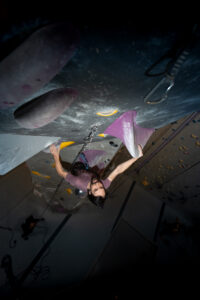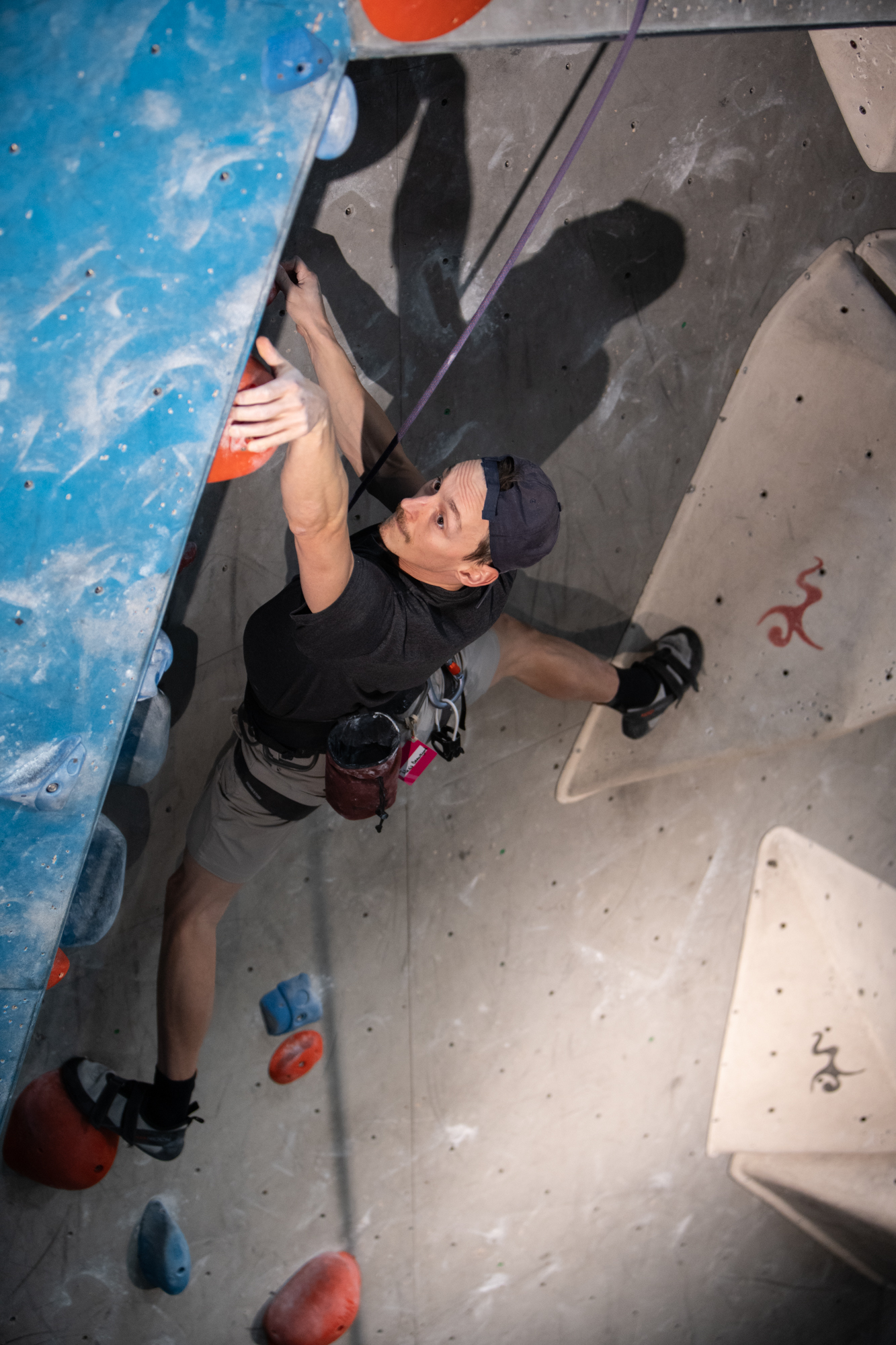When you open the doors to the world of rock climbing, you find yourself faced with a multitude of information and different ways of practicing the sport: bouldering, trad, top roping… It’s hard to see clearly when you’re just starting out and to understand all its subtleties!
As in every business, there’s a specific jargon to distinguish certain techniques or expressions. So I’ve put together a glossary to introduce you to this world I love so much. I’ve put together a sort of lexicon of the climbing world. Refer to it whenever you like.
The different types of climbing
Route climbing or free climbing
This type of climbing requires two people and the ability to belay your climbing partner.
Top-roping
Top-roping is an excellent way for new climbers to experiment with climbing and test higher walls in complete safety, using basic equipment such as a harness and belay system (ATC or Grigri, for example).
This technique can also be practised outdoors if the routes are equipped to accommodate a moulinette, or if you have a nice friend who climbs lead and can set up a belay for you.
En premier de cordée / en tête / lead
Lead climbing is for more experienced climbers, able to read and climb more difficult routes.
In first-rope climbing, the rope starts on the ground with the belayer. The climber attaches the rope to quickdraws for protection as he or she progresses up the wall.
Traditional “trad”
The quintessence of outdoor adventure climbing can be the most terrifying for some. It’s all about installing your own protection using “jammers” that fit into cracks in the rock. You climb in the same way as a lead climber, clipping your quickdraws to your rope.
Ice climbing, or cascade de glace
A winter sport for the more adventurous, ice climbing with special ice axes and crampons on frozen waterfalls. Thrills guaranteed!
Boulder climbing
Bouldering
Bouldering is a form of climbing that takes place on lower walls and without the use of a rope or harness. What’s more, you won’t need a partner, although you’ll enjoy climbing in a group.
The highball
In bouldering, a highball is a bouldering problem of significant height, usually 4.5 metres or more, and whose fall can result in serious injury. These climbs often use mats to mitigate the risks, but the height still makes them a more serious undertaking than shorter bouldering problems.
Lowball
When the blocks (often outside) are too easy or too small, we arbitrarily decide to exclude certain parts to make it harder.
Classic example: sitting start, no feet, no right to stop…
The approach
The path that takes you to the bottom of the outdoor tracks.
Climbing equipment
Climbing shoes
Specialized sturdy shoes, not very comfortable but I assure you, you get used to them. They’re designed for precision and made of rubber to grip the porosity of walls and crags.
Climbing harness or thigh harness
The harness consists of a waist belt, two thigh loops, a belay loop, tie-in points and gear loops. It allows you to rope yourself to the person belaying you. A picture with terms and arrows and all
Chalk bag
A bag that attaches to the belt for carrying chalk.
Powdered magnesia (or chalk)
This is a fine white powder based on magnesium carbonate, used in climbing to improve grip by absorbing moisture and perspiration. It also improves grip on holds.
Liquid magnesia
Liquid magnesia is a product based on magnesium carbonate and alcohol, usually isopropyl alcohol. It is applied to the hands to dry the skin and improve grip, particularly in climbing, gymnastics and weightlifting. The alcohol evaporates, leaving a thin layer of dry magnesia on the hands. It is less volatile than powdered magnesia. Its clear advantage is that it’s alcohol-based, which makes it a very good hand disinfectant, but unlike its hydroalcoholic gel counterparts, it lets you discover all your little cuts.
Common belay devices
A belay device is a piece of mechanical climbing equipment used to control a rope during belaying. It is designed to improve the safety of the climber. It is connected to the
There are three types: tubular (like Black Diamond’s ATC), brake-assisted (like Petzl’s Grigri®) and geometric (like Mammut’s Smart Alpine).



Screw carabiner: carabiner can be locked with a screw
Quickdraws: two carabiners attached by a strap
Quick link: small, screw-lockable steel carabiner, designed to be durable enough to stay on walls.



Climbing rope: an umbilical cord that keeps you alive during your ascent.
Figure-of-eight knot : common technique for roping up a climber.
NB: not to be confused with a figure-eight (an outdated abseiling system).


Anchors:
- Platelet: a platelet is a steel part that is screwed onto a wall or panel to attach a quickdraw.
- Anchoring: steel ring screwed into a wall for attaching quickdraws or installing a belay station.


Learned terminology
- Beta: series of movements to solve problems on the track
- Linking a route: climb the route without falling or resting after trying it out or working on it.
- Flash a route: climb a route on the first try, but with a few “betas”.
- Climbing a route on sight: climb a route on the first try without any beta.
- A crux: the most difficult or technical passage on a route.
- Dynamic movement: a fast, precise movement in which the climber projects towards a hold, often detaching from one hold to reach the next.
- Campus climbing: climbing without legs
- Giving or swallowing slack: we talk about slack in the rope
- Take ! : tension the rope to enable the climber to stop without falling. This is called sitting in your harness.
Route rating: the difficulty level of a route. In North America, we use the Yosemite Decimal System (YDS), which ranges from 5.0 to 5.15d. This system classifies routes according to their difficulty, using numbers and letters to refine precision. There are ratings below 5, but this is not considered climbing.
Types of climbing holds
- Crimp/reglettes: small, thin plug used only with fingertips
- Jug / bac – good grip: deep grasp in which all phalanges can be engaged
- Slopers / flats: non-positive hold on which you commit with an open hand
- Pins / pliers: grip between thumb and other fingers
- Pockets: two- or three-finger grip
- Modules / volumes: a geometrically shaped mass on which grips are applied to create relief.
- Foot holds / gratons: small holds where it is difficult to catch with the fingers







Types of climbing wall :
- Slab: positive wall, generally with smaller outlets requiring good technique
- Tilt: negative wall requiring greater strength
- Dihedral: track between two wall faces forming a concave corner
- Stop: track on two sides of a convex wall
- Roof: surface overhanging the face of the wall
- Spur: forms an overhang or projection on a wall
- Chimney: two walls facing each other
- Vire: a flat or gently sloping area in the middle of a wall
– Agathe de Barochez






